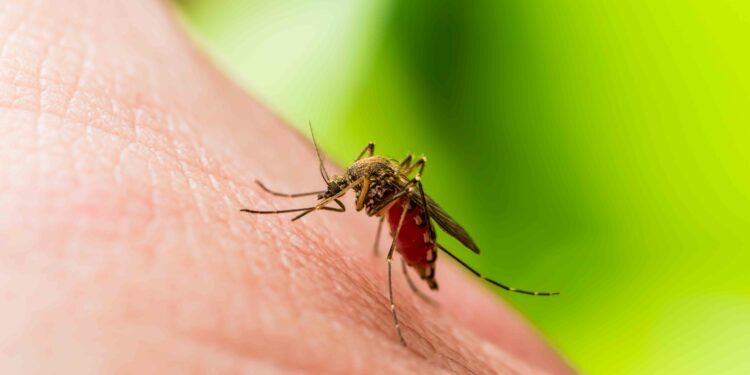U.S. health officials are warning about the emergence of an insect-borne disease called Oropouche virus, which typically causes symptoms like sudden fever and muscle aches.
In late 2023, the Oropouche virus—sometimes referred to as “sloth fever”—was identified as the cause of large outbreaks in Amazon regions, where it’s endemic, and new areas in the Caribbean and South America. Over 8,000 cases have been reported in Bolivia, Brazil, Columbia, Cuba, and Peru.Â
The disease has also affected 19 people who recently returned from Cuba or Brazil to Europe and 21 people in the U.S., all of whom had traveled to Cuba this summer, according to an August 27 Centers for Disease Control and Prevention announcement.
None have died and there’s no evidence that the disease is spreading with the country, but the CDC has recommended that pregnant women avoid non-essential travel to the virus hotspots.
Here’s what you need to know about the virus.
nechaev-kon / Getty Images
Oropouche virus, named after the village in Trinidad and Tobago where it was discovered, was first identified in a 24-year-old forest worker in 1955.
After he developed a severe fever, doctors took a blood sample and determined that the illness was caused by a species of mosquito called Coquillettidia venezuelensis.Â
The virus has been primarily located in South America, Central America, and the Caribbean. It is typically transmitted through the bite of some species of midges, an umbrella term for different types of small flies, and possibly by various mosquito species.
Oropouche is often called sloth fever because scientists who had first investigated the virus found it in a three-toed sloth and believed sloths were important in its spread between insects and animals.
Researchers estimate that the virus has affected more than 500,000 people overall. However, some people with the virus may be misdiagnosed, as many symptoms are similar to those of other tropical diseases, such as Zika and malaria.Â
“We live in a changing world where diseases spread by insects are affecting more people than ever,”Vincent Hsu, MD, infectious disease specialist and infection control officer for AdventHealth, told Health. “Because Oropouche virus is only acquired from visiting affected areas outside the United States, the good news is, there is no risk unless traveling to an area where the virus is circulating.”
According to the CDC, about 60% of people infected with oropouche develop symptoms. Symptoms typically appear three to 10 days after being bitten, and last for three to six days. However, they can also reappear a few days or weeks later.
Common symptoms include:
Sudden feverMuscle achesJoint stiffnessHeadaches
Other symptoms include eye pain, light sensitivity, nausea, vomiting, diarrhea, fatigue, and rash.Â
In rare cases, the disease can infect the nervous system and cause encephalitis—inflammation of the brain—or meningitis, which is inflammation of the spinal cord or membrane surrounding the brain.
Oropouche is rarely fatal, but according to the CDC, two otherwise healthy people in Brazil died from the infection this year. Â
Those who are over age 65 or have weakened immune systems are at greater risk for developing severe disease, according to Hsu. The virus may also be more dangerous for pregnant people and their fetuses. In Brazil, infections in five pregnant women were associated with fetal death or congenital abnormalities, including microcephaly. Â
Of the 21 U.S. cases, most had resolved on their own, the CDC said. However, at least three patients experienced recurring symptoms after the illness had initially gone away.
A lab test can confirm the virus, which may resemble Zika, malaria, or dengue.Â
There’s no specific treatment for oropouche, but doctors may recommend steps to alleviate symptoms. They include getting rest, drinking fluids to prevent dehydration, and taking over-the-counter pain medicine to reduce fever and pain.
There’s no vaccine to prevent infection, so avoiding being bitten by midges and mosquitoes is the best way to ensure you don’t get oropouche.Â
The CDC has recommended that pregnant people avoid traveling to Cuba and that everyone take precautions when traveling to countries where the disease is prevalent. Those include using fine mesh nets on doors and windows, wearing long-sleeved shirts and pants, and applying bug repellent. People should also avoiding going out at dawn and dusk—when mosquitos are most active—and prolonged periods near areas with water, where they’re most likely to be found.Â
“Anyone who develops symptoms after returning from anywhere the disease is circulating should inform their provider about recent travel,” Hsu said.
As for how worried people in the U.S. should be, medical experts agree that you don’t need to be too concerned about the so-called sloth virus just yet.Â
“There are more cases in the United States this past month than previous months, and that’s probably due to our climate changes and people’s travel,” John Whyte, MD, a physician and chief medical officer of WebMD, told Health. “I think it is something we should watch from a public health department perspective, but as individuals, I don’t think we need to be worried at this point.”
Source link : http://www.bing.com/news/apiclick.aspx?ref=FexRss&aid=&tid=66d228759e21438b93562af4d7b994ec&url=https%3A%2F%2Fwww.health.com%2Foropouche-virus-sloth-fever-insects-8704397&c=175890718379726865&mkt=en-us
Author :
Publish date : 2024-08-30 09:10:00
Copyright for syndicated content belongs to the linked Source.












